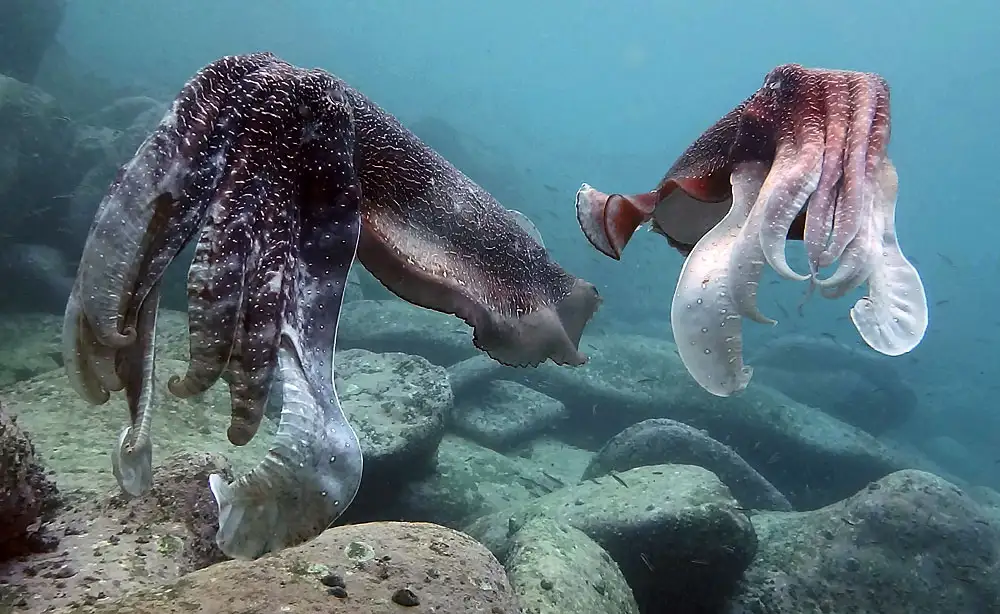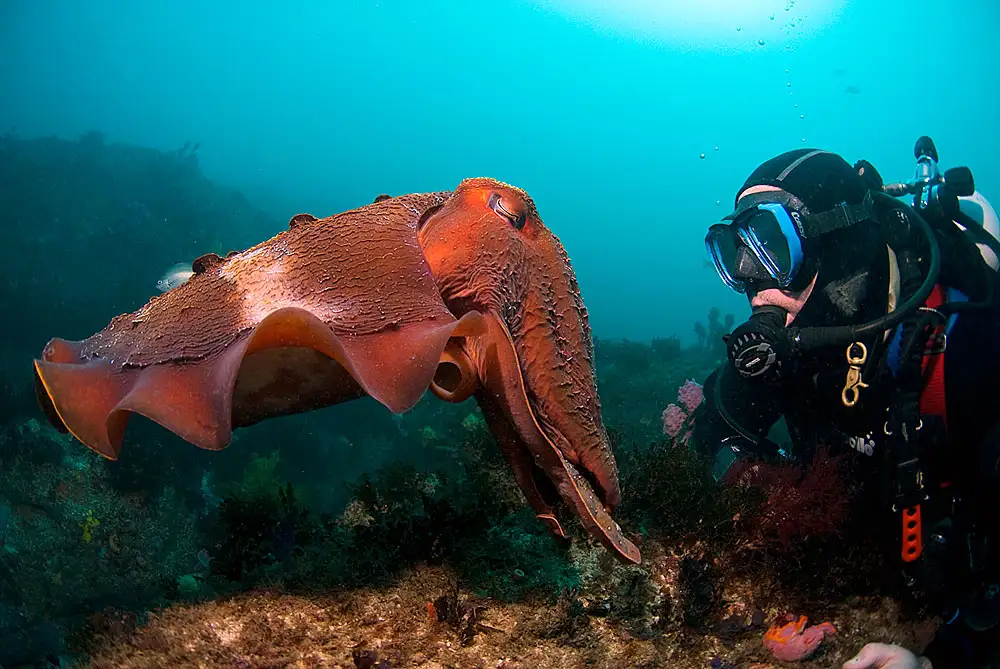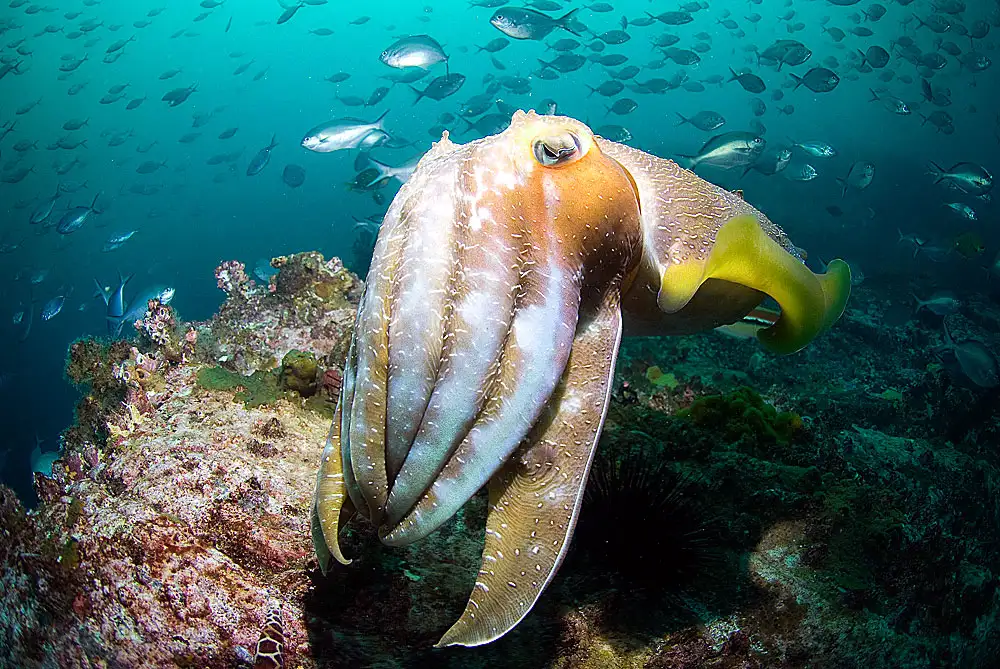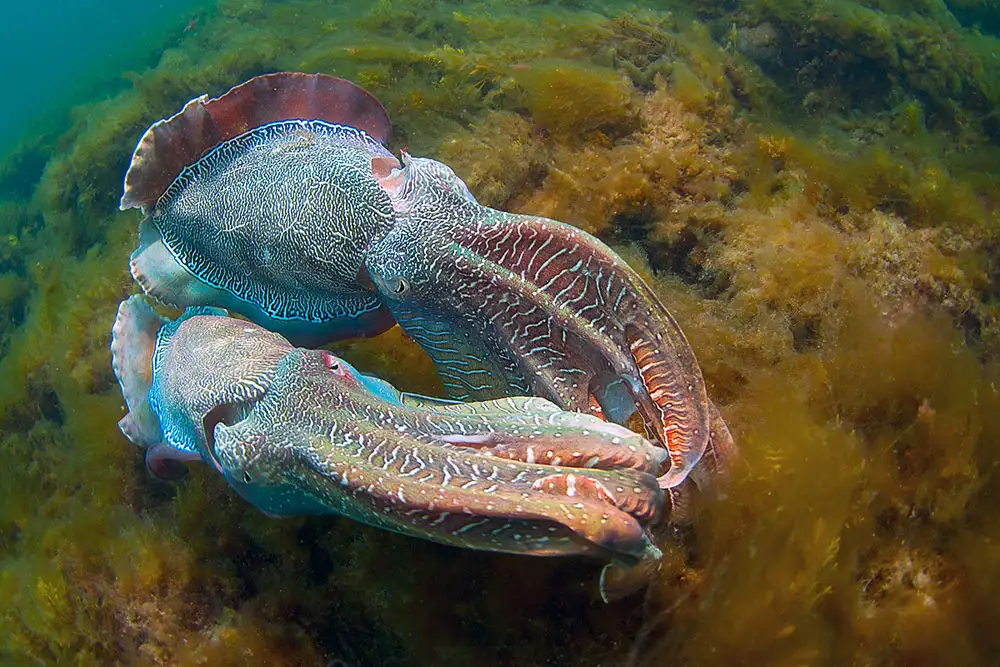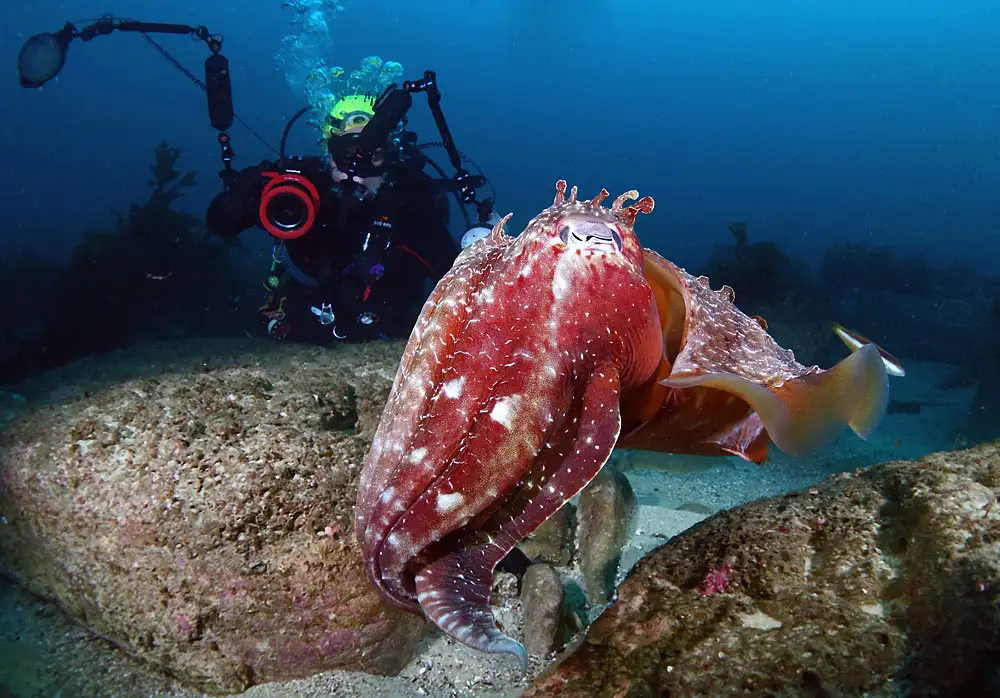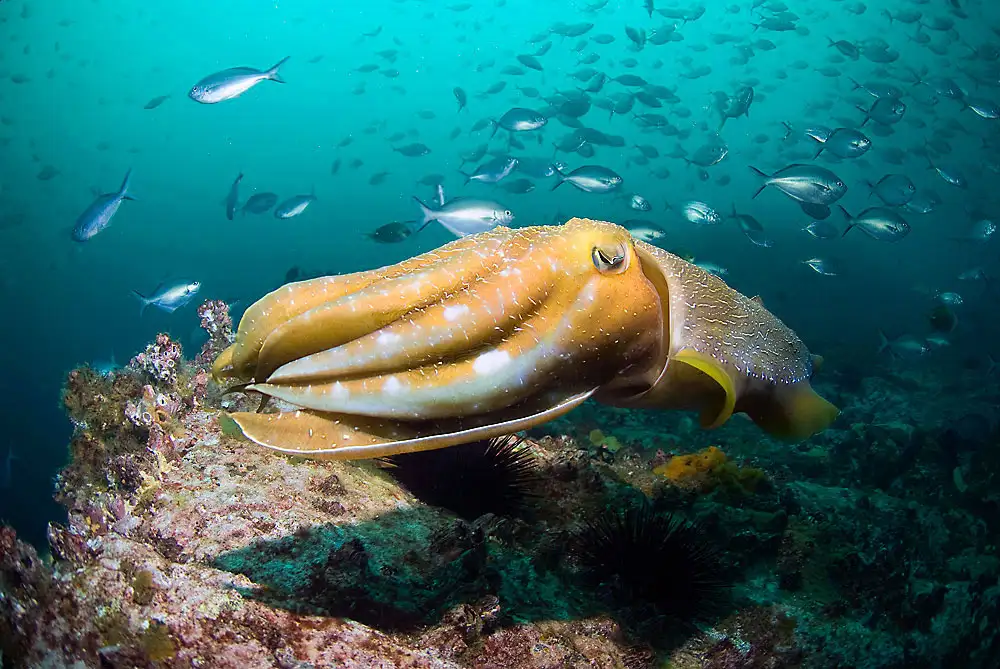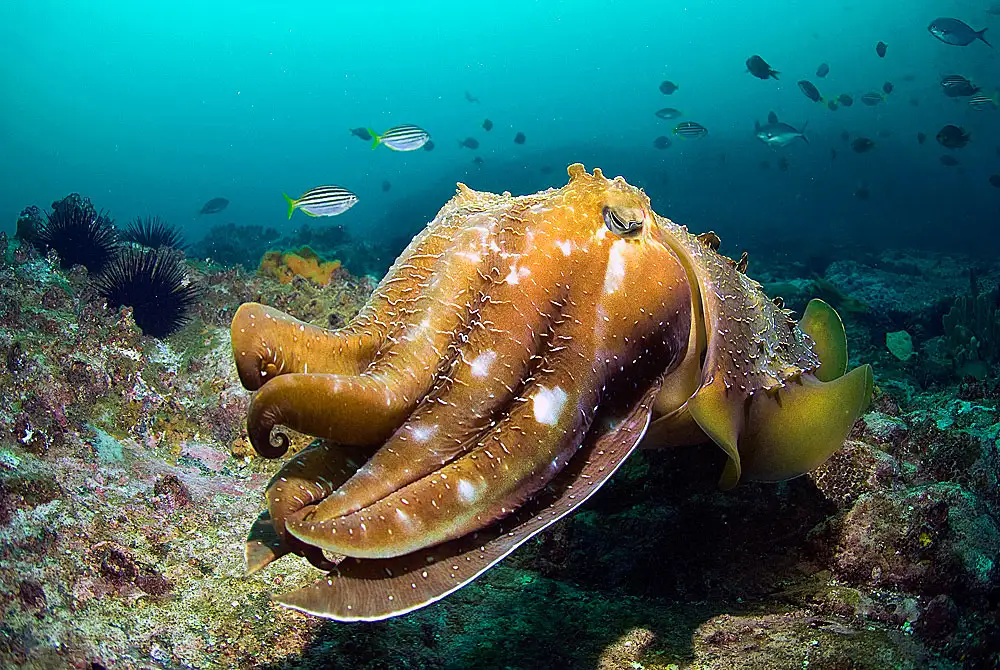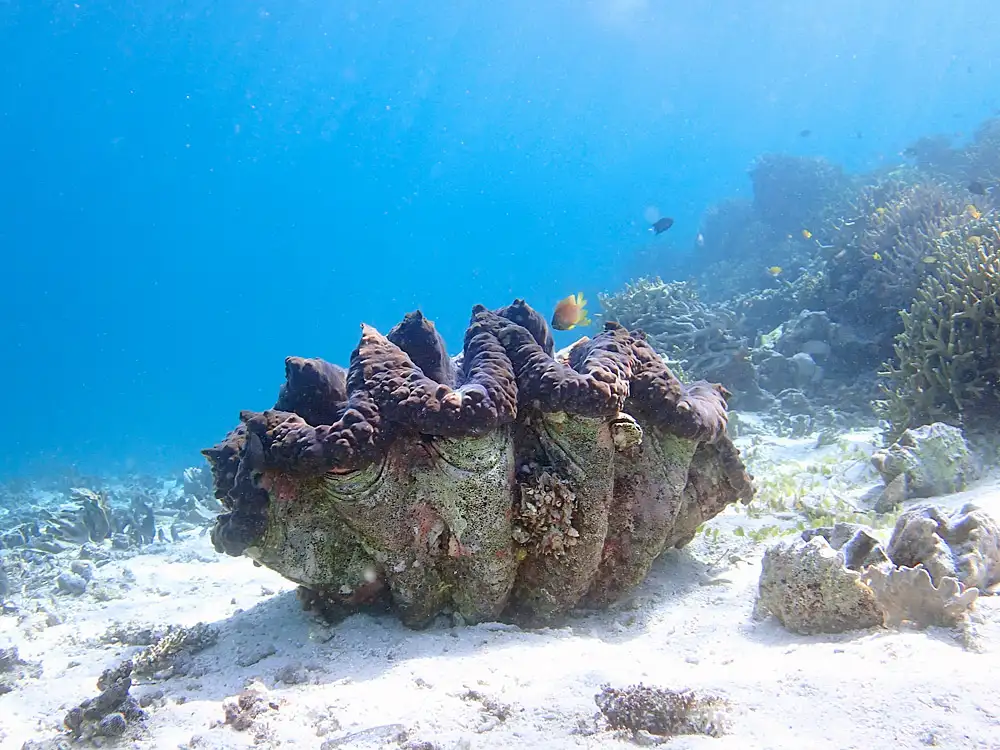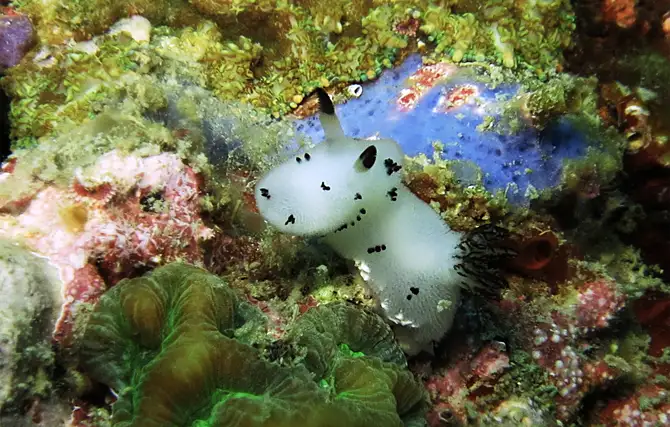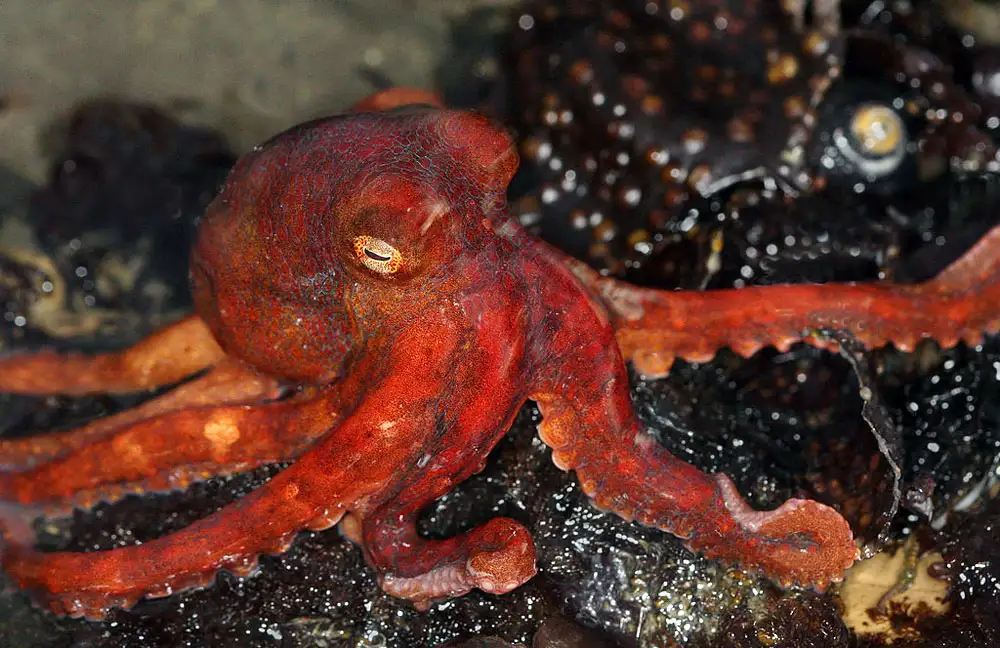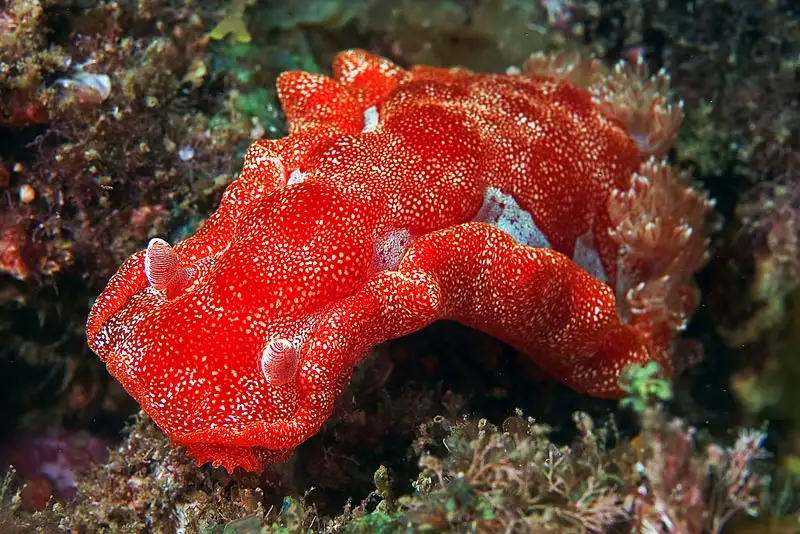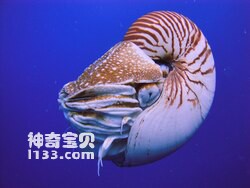Giant Australian Cuttlefish
IUCN
LCBasic Information
Scientific classification
- name:Giant Australian Cuttlefish
- Scientific Name:Sepia apama
- Outline:Mollusca
- Family:Sepiidae Sepia
Vital signs
- length:Mantle to ~50 cm; total length ~1 m
- Weight:Very large individuals ~10 kg
- lifetime:About 1–2 years; post‑spawning senescence
Feature
Millisecond camouflage & papillae; winter spawning aggregations; strike tentacles; buoyancy via cuttlebone.
Distribution and Habitat
Temperate S Australia—reefs, seagrass, sand/gravel (1–50+ m); iconic Whyalla aggregation.
Appearance
Broad body, continuous lateral fin; 8 arms + 2 tentacles; large eyes with W‑shaped pupil; roughened skin when papillae raised.
Details
Sepia apama, the Giant Australian Cuttlefish, is among the largest cuttlefish (order Sepiida, family Sepiidae). It is famed for millisecond colour/texture change and erectable papillae that sculpt the skin, enabling superb camouflage and vivid courtship displays. The winter spawning aggregation in South Australia’s Spencer Gulf is world‑renowned.
Ecology & Biology
Diet: fishes, crustaceans and polychaetes; prey seized by two strike tentacles and processed with a beak.
Reproduction: adults migrate in winter to shallow reefs to mate; males display high‑contrast patterns and compete; females glue egg clusters into crevices and algae.
Behaviour: capable learners; deploy dynamic bands, checkerboards and passing waves according to background and rivals.
Identification
Possesses a large internal cuttlebone for buoyancy; broad body with a continuous lateral fin.Eight arms + two tentacles (tentacles retracted into sheaths), large eyes with a characteristic “W‑shaped” pupil; skin papillae can be raised for a rough, nodular appearance.
Size & Longevity
Length: mantle up to ~50 cm; total length approaching 1 m.
Weight: very large individuals may reach ~10 kg (regional variation).
Life: typically 1–2 years; senescence follows spawning.
Range & Habitat
Temperate southern Australia (WA–SA–NSW), on rocky reefs, seagrass and sand/gravel from ~1–50+ m. The Whyalla nearshore of northern Spencer Gulf hosts the iconic aggregation.
Conservation & Threats
Threats: coastal development and discharges, fishing/bycatch, tourism disturbance, habitat loss and ocean warming.
Management: seasonal closures/speed limits/diving codes at core spawning sites; water‑quality monitoring and “no‑touch” guidelines.
IUCN: for site consistency this entry is marked Not Evaluated (NE) (refer to latest authoritative assessments for updates).
FAQ
Q1. How do they change colour so fast? By controlling chromatophores, iridophores and leucophores, plus raising papillae to alter skin texture.
Q2. How to tell cuttlefish from squids and octopuses? Cuttlefish have a large internal cuttlebone and a continuous lateral fin; squids are more arrow‑shaped with terminal fins; octopuses lack an internal shell and have eight arms only.
Q3. Why winter aggregations? For spawning; males perform dramatic displays and females cement eggs in crevices.
Q4. Are they dangerous? Saliva contains enzymes and mild toxins for subduing prey; not comparable to blue‑ringed octopuses in human risk—avoid handling.

